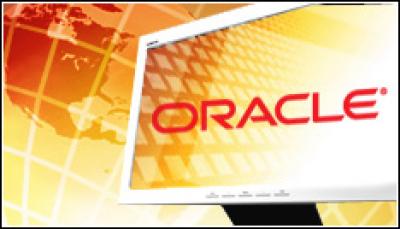Oracle Launches Java Cloud Software And Blades

In Brazil, Oracle launched Elastic Cloud X2-2, Java middleware for SPARC Exalogic servers, and two blade servers
At OpenWorld Brazil in Sao Paulo, Oracle launched its new-generation Java application infrastructure for virtual machines. It has also challenged HP and IBM again with a brace of new blade servers.
The Elastic Cloud X2-2 is the cloud middleware expressly designed for running Java applications on Oracle’s SPARC Exalogic, the company’s new hardware platform for cloud systems. Its sister product, Exadata, is the SPARC database server. Oracle is not shy about claiming that they are both the fastest in the world at what they do.
Powerful Java Infrastructure
 Elastic Cloud X2-2 on the Exalogic is powered by either Windows on x86 Intel processors, or Sun SPARC chips which run the Solaris OS, whichever the user prefers.
Elastic Cloud X2-2 on the Exalogic is powered by either Windows on x86 Intel processors, or Sun SPARC chips which run the Solaris OS, whichever the user prefers.
On the Exalogic machine, Elastic Cloud X2-2 is a pretty powerful system. It combines 64-bit x86 processors, an InfiniBand-based I/O fabric and solid-state storage with the Oracle WebLogic Server, other enterprise Java Oracle middleware products and a choice of Oracle Solaris or Oracle Linux operating systems.
Oracle said that the Exalogic Elastic Cloud – Amazon calls its enterprise cloud service Elastic Compute Cloud, so there could be some confusion about all this in the future – can support thousands of Java and non-Java applications with differing security, reliability and performance requirements.
Naturally, the system is also optimised for integration with Oracle Database 11g, Oracle Real Application Clusters and the Oracle Exadata Database Machine.
Oracle Sharpens Its Blades
In a separate announcement, Oracle once again pointedly challenged its rivals Hewlett-Packard and IBM by unveiling new blade servers aimed at high-performance computing and highly virtualised environments.
The SPARC T3-1B blade servers are used to power Oracle’s SPARC/Solaris-based Exalogic Elastic Cloud T3-1B, which was rolled out last week. Secondly, the dual-node x86-based Sun Blade X6275 M2 system was announced. Both are designed to give customers with scale-out environments a high-performance, highly efficient, low-cost package, according to Dimitrios Dovas, director of product management for blades, x86 servers and networking at Oracle.
The Sun Blade X6275 M2 is a dual-node blade that doubles density while increasing performance and lowering power consumption, Dovas said. Such qualities are important in virtualised and cloud computing or high performance computing (HPC) environments, where users are looking to pack as much compute power into their data centres as possible, while keeping power and cooling costs down.
The Intel-based system also can come with Solaris, Oracle Linux and Oracle VM preinstalled. If users include Oracle Enterprise Manager 11g, they will have a single management system to handle the entire application-to-disk infrastructure, Dovas said.
The SPARC T3-1B blade also offers high density and reduced power consumption, Dovas said, but is based on Sun’s proprietary SPARC processors. in the fold.
Market research firm IDC said Oracle saw server revenues grow in the third quarter. However, Gartner analysts did not, saying that Oracle revenues fell.
“Following the acquisition of Sun’s hardware business, the company now faces the challenge of preventing further declines in the hardware segment,” Gartner analyst Adrian O’Connell said in a statement when talking about the third-quarter results.